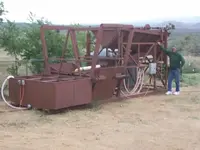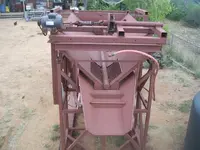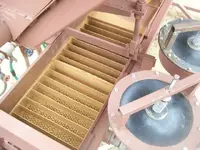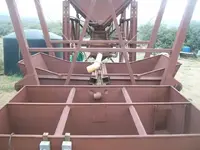- #1
Thread Owner
This is Bill in Arizona. I live in the Bradshaws. Not sure if this is the right forum for this topic, but I used to be a dredger in the mid eighties and I feel at home here. Getting too old for dredging now, cold water makes my joints ache, but that doesn't mean I can't participate. Below are some photos of a 5 cu.yd./hr placer gold mill I built years ago and kept in storage. Gold was only $300 then. This mill has to be fed with a Bobcat or backhoe/loader and has a water recovery and recycle capability. The input hopper is powered by a 1hp motor which spins an eccentric that causes the ore to migrate across a screen. The oversize is expelled and the undersized (3/8" minus) drops into a sluice for coarse gold retention and then flows across a duplex pan-American pulsator jig for fine gold recovery. Once the heavy mineral content is captured, the slurry flows into a dump bin where the water overflows into a clarification basin and is pumped back for reuse. The dump bins are periodically dumped onto the ground and the moist material can be stockpiled or returned directly to the excavation.
At $1100 an oz., I'm looking forward to putting it to work. We have a lot of capable prospectors around here, but where it breaks down is converting a decent placer deposit into a reliable cash flow. If you can process yds/hr instead of cu.ft/hr, a deposit averaging a pennyweight per yd. will produce some serious money. And, there's no reason why you couldn't put several mills on a single deposit.
Bill in Ariz.
At $1100 an oz., I'm looking forward to putting it to work. We have a lot of capable prospectors around here, but where it breaks down is converting a decent placer deposit into a reliable cash flow. If you can process yds/hr instead of cu.ft/hr, a deposit averaging a pennyweight per yd. will produce some serious money. And, there's no reason why you couldn't put several mills on a single deposit.
Bill in Ariz.








 ? I'd like to see running video/pix ANYTIME. Patent/private property would definately be my goal and thats a fine fab job!!!
? I'd like to see running video/pix ANYTIME. Patent/private property would definately be my goal and thats a fine fab job!!!  tons a au 2 u 2 -John
tons a au 2 u 2 -John